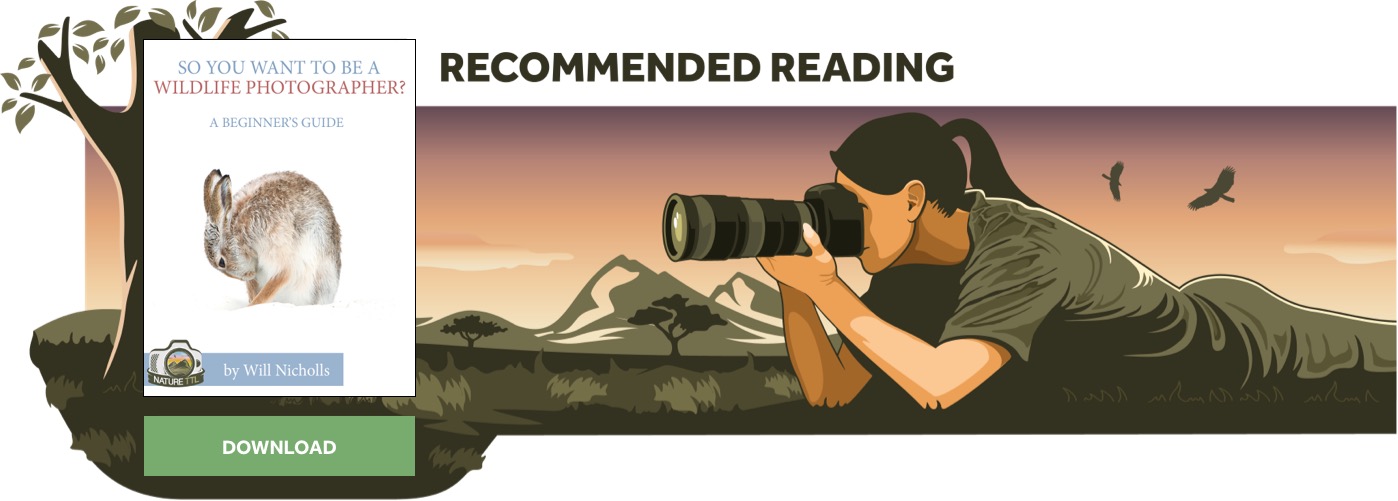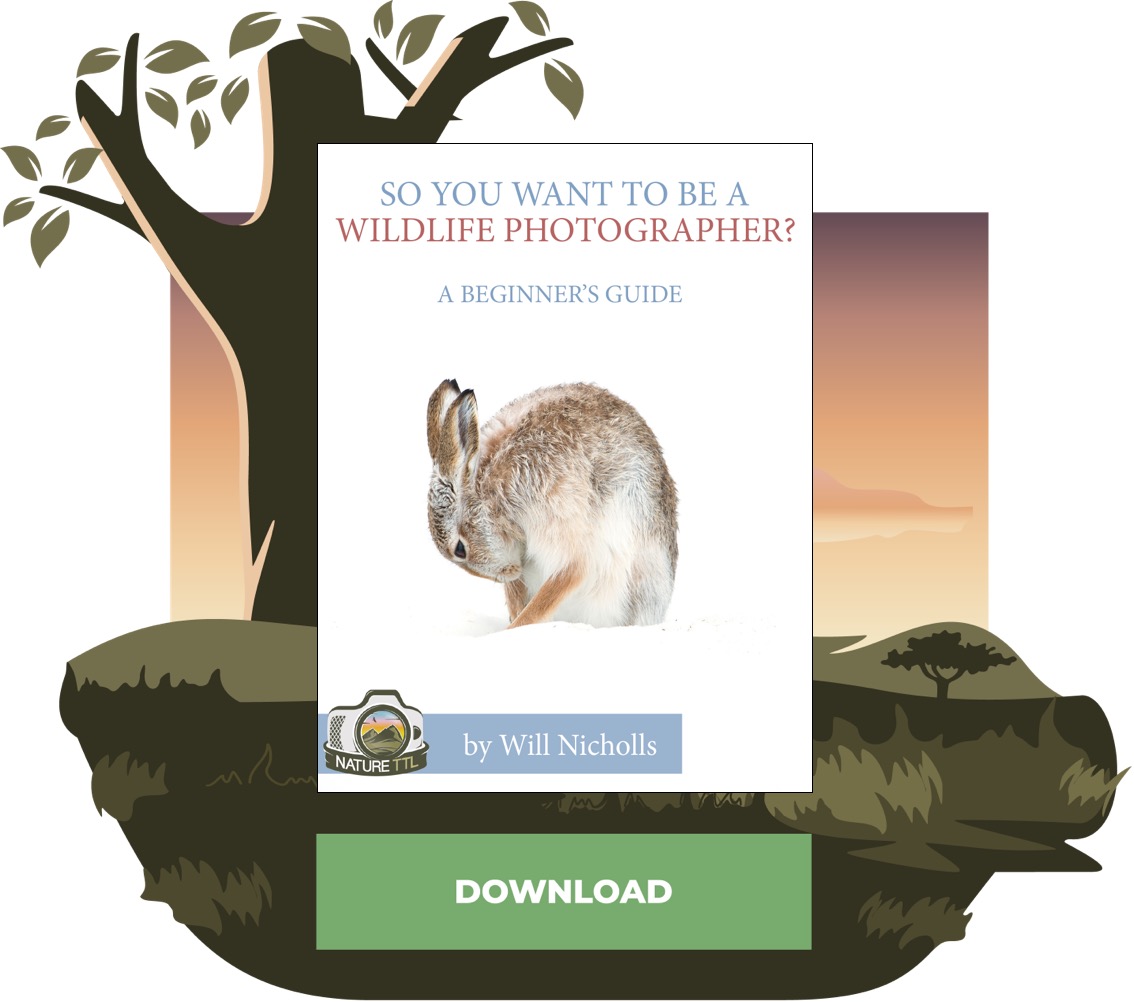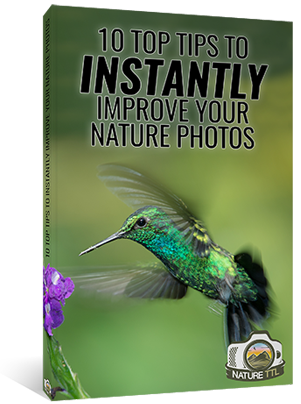Top Tips for Passerine Bird Photography

Passerine birds, also known as perching birds, represent the largest order of birds, Passeriformes, and encompass over half of all bird species.
Recognised for their specific toe arrangement – three pointing forward and one facing backwards – these agile creatures can be found in gardens, forests, and open fields worldwide.



From the vibrant goldfinch to the iconic robin, passerine birds are small and fast-moving, making them a challenging subject to photograph.
With these challenges, however, comes great reward, and due to their accessibility, these birds provide a wonderful subject for any aspiring wildlife photographer.
Read more: Bird Photography Tips – Shooting Bird Portraits
How to find and identify passerine birds
Common examples of passerines include sparrows, tits, finches, warblers, and swallows. These birds are often highly vocal. Learning bird songs is, in fact, a great way of identifying different bird species, especially when they are not easily visible.
As with any sort of wildlife photography, understanding the behaviour of your subject is crucial. Search for information, read as much as you can about your intended subject, and spend time simply observing them closely.

The knowledge you gain by watching and noting specific behaviour patterns will help you anticipate their movements and increase your chances of capturing those special moments.
These birds are most commonly found in habitats with ample perching opportunities, such as gardens, parks, forests, and wetlands.
Feeding habits vary widely, with many passerines frequenting bird feeders, offering an excellent opportunity to photograph them up close in your own back garden.
Setting up a feeding station
Creating a feeding station in your garden is one of the most effective ways to attract passerines, especially during the winter months when natural food is scarcer.
Periods of harsh weather will bring greater numbers of birds to the feeders and can often result in opportunities to capture interactions between two or more birds.
Read more: How to Attract Birds to Your Garden for Photography
Food selection
Offer a variety of seeds, nuts, suet, and fruit to attract a diverse range of species.
Sunflower seeds, nyjer seeds, and mealworms are particularly popular.
Feeder placement
When positioning your feeders, look for areas that receive a good amount of natural light.

Avoid placing them in the middle of a very open area, as passerines can be skittish and need the safety of surrounding foliage.
Read more: How to Harness Light in Bird Photography
Hygiene
Regularly clean feeders to prevent the spread of disease among birds. Wash feeders with a mild bleach solution and allow them to dry thoroughly before refilling.
Water source
Adding a source of water can attract even more species while providing opportunities for capturing images of birds bathing or portraits with reflections.
A large, rectangular-shaped planting tray with a carefully placed rock or log can be used as a reflection pool. You will need to place this carefully and may need to move it around until you are happy with the reflections on the water.
I prefer the reflections of trees or foliage, as the sky will usually appear too bright, overpowering, and lacking in colour.
Read more: How to Build a Bird Reflection Pool
Finding the perfect perch
The environment plays a crucial role in creating compelling images of passerines. Attractive perches can be attached to feeders or placed close by to add interest and hint at the bird’s specific habitat.
Finding perches
Whenever I am out taking pictures, I always keep an eye out for natural perches for my feeding station. I try to seek out branches, twigs, or flowers that complement the bird’s colours and add aesthetic appeal.
Moss or lichen-covered branches or a sprig of blossom in spring can provide a stunning setting, especially when placed against an appropriate background.

When looking for a suitable perch, make sure it is in keeping with the bird’s natural habitat to prevent the image from looking contrived and unnatural.
Positioning
Ensure the perch is well-lit by natural light. Consider the direction of the light, too. You may be able to position it so that it is front-lit in the morning and back-lit in the evening, depending on the time of year.
During the golden hour, the light is warm and rich, providing the perfect opportunity to experiment with backlighting. Overcast days should not be overlooked. Clouds act as a giant diffuser, softening the light by eliminating harsh shadows.
This is the perfect time for capturing intricate feather detail and muted colours.
Backgrounds
To eliminate any unwanted distractions, backgrounds should be distant enough to be rendered completely out of focus. How distant will depend on your choice of lens and aperture.
A wide aperture will result in a shallow depth of field, helping to separate the subject from its surroundings.
A long focal length will exaggerate the effect further, so take a few test images and see how the background appears.
Also, consider the colours in the background, and look for areas where the colours complement the subject rather than clash with it. Areas of shadow can be used to create a dark background, which can add drama and impact.
Read more: How to Create a Beautiful Bokeh
Camera settings for passerine bird photography
Photographing passerines requires technical precision due to their small size and rapid movements. In addition to shutter speed, aperture, and ISO, you will also need to consider your focusing settings.
Read more: 6 Essential Camera Settings for Wildlife Photographers
Shutter speed
I recommend a shutter speed of at least 1/1000th of a second to freeze the movement of a small passerine bird. They rarely sit in one place for long, so you will need to react quickly and ensure that your shutter speed is fast enough to freeze the action.

For flight photography, you will need to increase this to at least 1/2500th of a second.
Read more: 4 Essential Tips for Photographing Birds in Flight
Aperture
A wide aperture of f/2.8 to f/5.6 will create a shallow depth of field, isolating the bird from the background while keeping the subject sharp.
The closer you are to your subject, the less depth of field you have, so when shooting frame-filling portraits, you may need to stop down to a smaller aperture to ensure that both the eye and the chest feathers are sharp.
ISO
Don’t be afraid of using a high ISO setting when shooting in low-light conditions. It is better to achieve critical sharpness with some noise visible than a clean, noise-free image that lacks sharpness.
Focus mode
Continuous autofocus (AI Servo or AF-C) will enable you to track moving birds.
Eye detection focus can work exceptionally well depending on the circumstances, but if it is struggling to pick out the eye, switch to single-point or group focus and keep it at the centre of the frame for maximum accuracy.
Read more: Understanding Autofocus Points and Modes
Burst mode
Use continuous shooting to fire a sequence of frames, increasing your chances of capturing the perfect moment.
Manual focus
For action images of birds in flight, taking off, or landing, you may find it more effective to use manual focus and fire a burst of images as the bird passes through the plane of focus.
Place a perch close to the feeder and focus halfway between the two. As the bird flies from the perch to the feeder, fire a sequence of shots.
Composition and framing
Strong composition is vital in creating visually striking images. Try to visualise your images before firing the shutter, and think carefully about the placement of each element within the frame.
There are plenty of compositional guidelines to help you frame your image, but it is important not to let these ‘rules’ restrict your creativity.
Read more: The Essential Guide to Composition in Bird Photography
Rule of thirds
Imagine the frame being split into nine equal parts, with two horizontal and two vertical lines. Positioning the subject on one of the intersecting points (known as power points) will almost always create a more dynamic and aesthetically pleasing composition.
Incorporating the environment
Include elements of the bird’s habitat to tell a story and give a sense of place.

Leaves or blossom, for instance, can be used to add depth and give context.
Eye level
Shooting at the bird’s eye level creates intimacy and forges a stronger connection between the subject and the viewer.
Negative space
Leave space around the bird to convey a sense of isolation and emphasise its natural surroundings. This works particularly well in winter when shooting in snow.
Position the bird so that it is looking or moving into the space for a more balanced composition.
Read more: How to Use Negative Space in Your Wildlife Photos
Leading lines
You may be able to find natural lines like branches or a dry stone wall, perhaps, to guide the viewer’s eye to the subject.
Capturing behaviour and interactions
Passerines are social birds and often engage in intriguing behaviours. During periods of harsh weather, squabbles over food often break out. This fast-paced action can provide opportunities to capture engaging action shots.

When including two or more birds in the frame, you may need to stop down to a smaller aperture to increase the depth of field. Always keep a close eye on your shutter speed and increase your ISO if it drops below 1/2500th of a second.
Here are some other interesting behaviours to watch out for.
Read more: Wildlife Photography – Understanding Animal Behaviour for Better Images
Feeding habits
Documenting birds feeding or drinking from a pool of water can result in interesting images.
Singing
During the breeding season, many passerines, such as robins, wrens, blackbirds, and song thrushes, sing to maintain their breeding territories.
Flocks and fights
Capture dynamics within groups, such as territorial disputes or cooperative feeding.

Birds squabbling over food or gathering in flocks can create dynamic action shots.
Read more: How to Photograph Flocks of Birds
Parenting
During the breeding season, you may find opportunities to photograph parents feeding chicks or teaching them to fly. These moments require patience and a careful approach to avoid disturbing the birds, so only attempt this if there is no risk of disturbance.
When young birds have fledged from the nest, parents often look for a readily available food source, such as garden feeders, and will feed their young in nearby foliage or trees.
Read more: How to Photograph Nesting Birds
Bathing and preening
Birds often clean themselves by splashing in water or carefully arranging their feathers, offering opportunities for action and detail shots.
Patience and observation are key. Spend time watching your subjects to increase your understanding of their behaviour patterns. This will allow you to better anticipate their movements, helping you to be ready to fire the shutter at the optimum moment.
Read more: 7 Ways to Capture Character in Bird Photography
Recommended equipment
As with any sort of bird photography, having suitable gear will make life easier, especially when it comes to photographing action.
Camera
A DSLR or mirrorless camera with fast autofocus capabilities is ideal.

Models with high frame rates (e.g., 10 frames per second or more) are beneficial for capturing action. Eye detection focus will also be a huge advantage, but it is by no means essential.
Lenses
A telephoto lens of 300mm or longer will allow you to photograph birds from a distance without the risk of disturbing them. Longer lenses of 500mm or 600mm will make it easier to achieve diffuse backgrounds and help separate the subject from its surroundings.
Tele-zoom lenses are a great option as their flexibility will give you more options when it comes to framing and composition.
Tripod
A sturdy tripod provides stability for long sessions and is a must when shooting from a hide. A gimbal head is ideal for lenses of 500mm upwards and can make tracking birds in motion easier.
Read more: A Guide to Choosing a Tripod Head
Hide
Use a portable hide to get closer to birds without disturbing them.

Camouflage netting or a purpose-built bird photography hide works well, especially if it can be left in situ for long periods of time.
Read more: What’s the Best Portable Wildlife Photography Hide?
Remote shutter release
A shutter release will minimise vibrations and is particularly useful if you have your camera pre-focused on a specific spot.
Memory cards
You can never have too many memory cards! Always carry extras to avoid running out of storage during a shoot. Opt for high-speed cards to handle burst shooting effectively.
In conclusion
Whether you are shooting in your back garden or local park, passerine birds can provide endless opportunities for creative wildlife photography. Most passerines are small in size and very fast-moving, making photographing these birds a challenge.
By understanding their behaviour, setting up the right environment, and mastering the necessary technical skills, however, you can create stunning images that showcase the beauty and charm of these birds.
So, grab your camera, step outside, and immerse yourself in the enchanting world of passerine photography.





